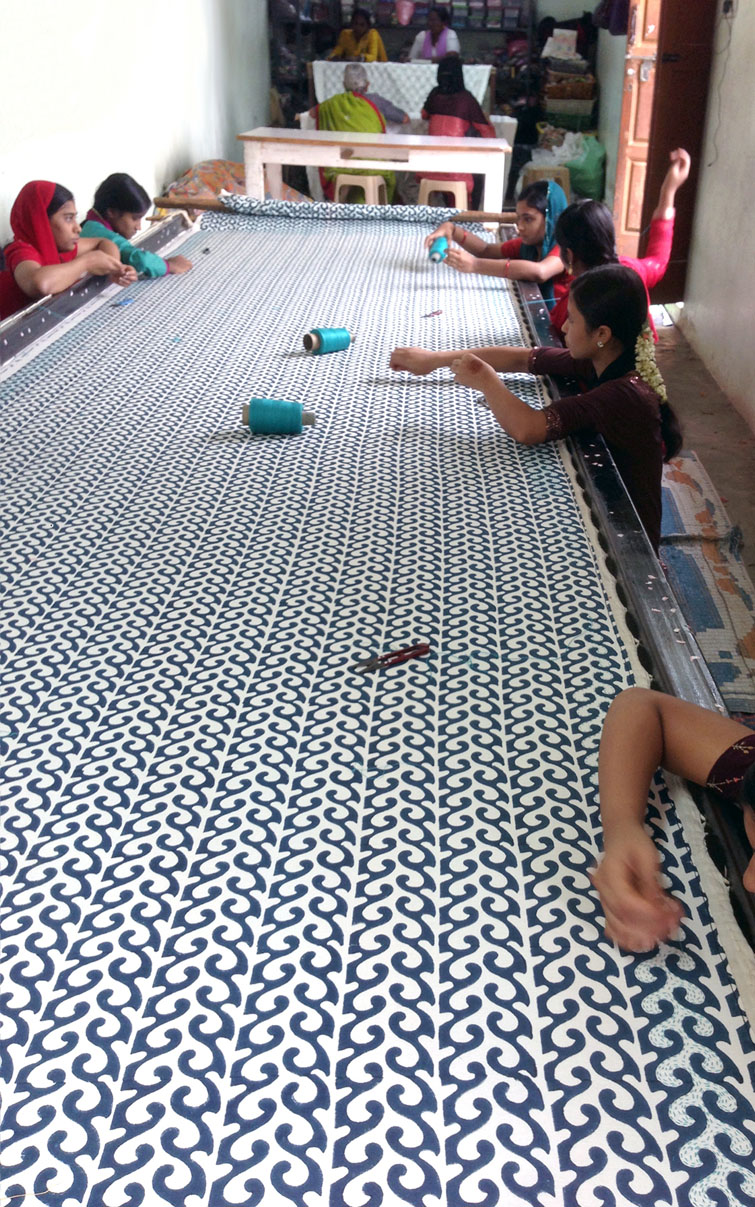Informed by a dedication to telling the story of Indian craftsmanship, our products are made by hand one yard at a time,
giving new context to the time-honored techniques of hand block printing, embroidery, and weaving.

Our textiles draw upon India’s rich history of embroidery traditions. Using techniques from various regions throughout the country, embroidery accents our block printed patterns with a tactile element.
Originating in the Eastern Indian subcontinent, kantha – from the Sanskrit word for “rags” – is a form of embroidery that involves a simple running stitch done in parallel lines, swirls, or pictorial motifs along the edges of a cloth or repeated to fill an expanse of fabric. Kantha stitching features prominently in the traditional saris worn by women in the Bengal region, and has traditionally been used to create nakshi kantha – colorful, decorative quilts crafted from discarded fabric which demonstrate the beauty of repair and reuse.
From the Hindi word meaning “little glass,” shisha is an ornamental embroidery technique defined by the use of small pieces of mirror which reflect light for a luminous effect. Shisha mirror-work originated in India in the 17th century when the reflective materials of choice ranged from silver beetles’ wings and chips of mica to tiny mirror discs, depending on one’s social status.
Chikankari is a traditional embroidery style from Lucknow in northern India in which artisans trace temporary block printed designs with stitches to create works of extraordinary detail. After the embroidered design is completed, the finished piece is carefully washed to remove traces of the printed pattern. There are references to embroidery similar to chikankari in India that date back as early as the 3rd century BC.

© 2025 Seema Krish





